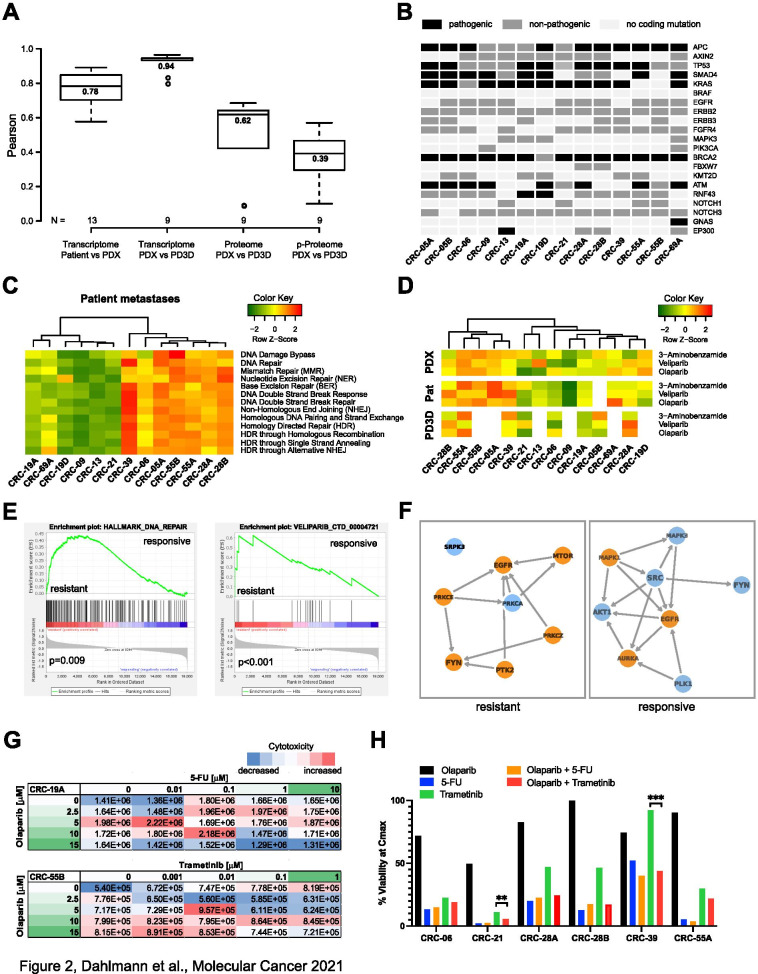Fig. 2.
Multi-omics characterization of pmCRC metastases, PDX tumors and PD3D models confirms similarity of matched pmCRC models and can be used for predictive biomarker analysis. A Box plot representation of Pearson correlation coefficients of matched models on the basis of transcriptome, proteome and phosphoproteome analysis of patient metastases, PDX tumors and PD3D cell culture models. Center lines show the medians; box limits and whiskers are plotted according to Tukey, outliers are represented by dots. B Representation of the occurrence of frameshift mutations, truncations or amino acid substitutions commonly found in CRC. Respective gene mutations were counted when they were found in the patient metastasis or enriched in the generated PDX or PD3D models. Black – pathogenic according to ClinVar, dark grey – non-pathogenic/uncertain according to ClinVar, light grey – no alteration to reference sequence. C Single sample gene set enrichment analysis (ssGSEA) of expressed transcripts of patient metastases focusing on DNA repair signatures (MsigDB/Reactome). D Prediction of treatment response to PARP inhibitors 3-aminobenzamide, olaparib and veliparib by ssGSEA of drug response signatures (DsigDB) of expressed transcripts. E GSEA of PDX tumor expression signatures grouped for response or resistance to 5-FU treatment. Significant enrichments were found for DNA repair in general (MsigDB/Hallmarks) and the signature for response to veliparib treatment (DsigDB). F Visualization of altered kinase activity and interaction (KEA3) by integrated proteome and phosphoproteome data of 5-FU responsive and resistant PDX models. Blue – present in top-10 of either MeanRank or TopRank score, orange – present in both top-25 of both MeanRank and TopRank score. G,H Response evaluation of pre-clinical pmCRC models under combinatorial treatment of 5-FU or trametinib with olaparib. Explanted PDX tumor cells (G) were treated with the indicated drug concentration and combination for 24 h in the presence of a fluorescent cytotoxicity marker. Fluorescence signals of each treatment condition, indicating dead or dying cells, were normalized to the cell confluence of the same well (n = 2). Blue – decreased cytotoxicity compared to median, red – increased cytotoxicity compared to median. PD3D cell culture models (H) were treated with Cmax concentrations of 5-FU, trametinib, olaparib or drug combinations and treatment response was determined as cell viability after 4 days (n = 4)

